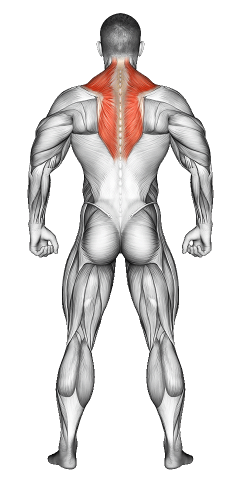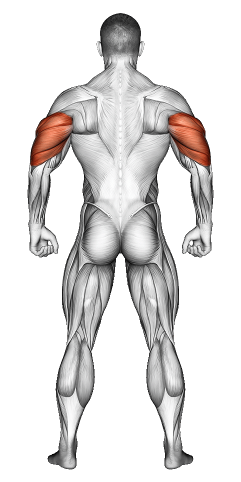Decline Push Ups: Video Tutorial & Exercise Guide

Written By: Claude Michael
Updated: Oct 13, 2024
| Workout | Decline Push Ups |
| Primary Muscle Group | Chest |
| Secondary Muscle Group | Shoulders, Triceps Abs |
| Equipment Required | Bench |
| Force Type | Push |
| Mechanics | Compound |
| Exercise Type | Strength |
| Difficulty | Beginner |
Decline Push Ups: Video Tutorial & Exercise Guide
- 1.Decline Push Ups: Muscle Groups
- -1.1Primary Muscle Group
- -1.2Secondary Muscle Group
- 2.Decline Push Ups: Step-by-Step Guide
- 3.Decline Push Ups: Overview
- 4.Decline Push Ups: Benefits
- 5.Decline Push Ups: Pro Tips & Advanced Techniques
- 6.Decline Push Ups: Progression Plan
- 7.Decline Push Ups: Frequently Asked Questions (FAQs)
Decline Push-Up: Step-by-Step Guide
- Step 1: Start by placing your feet on an elevated surface, such as a bench or box, and position your hands on the floor slightly wider than shoulder-width apart. Your body should form a straight line from your head to your heels.
- Step 2: Engage your core and keep your body in a straight line as you lower your chest toward the floor by bending your elbows. Make sure your elbows are angled at about 45 degrees from your body.
- Step 3: Lower your chest until it almost touches the ground, keeping control of the movement. Your head should remain neutral, in line with your spine.
- Step 4: Push through your palms to extend your arms and return to the starting position, maintaining a straight body and engaged core throughout the motion.
- Step 5: Repeat for the desired number of reps, focusing on slow and controlled movements to maximize muscle engagement.
Decline Push-Up: Overview
The Decline Push-Up is a variation of the standard push-up that places more emphasis on the upper chest and shoulders. By elevating your feet, you shift more of your body weight onto your upper body, increasing the difficulty and targeting the upper pectoral muscles more effectively.
This exercise is an excellent choice for individuals looking to build upper-body strength, particularly in the chest, shoulders, and triceps, while also engaging the core for stability. Decline push-ups are a great addition to any bodyweight workout routine.
Decline Push-Up: Benefits
Decline Push-Ups target the upper portion of the pectoral muscles, helping to develop chest strength and definition. They also engage the shoulders and triceps more than traditional push-ups, providing a well-rounded upper-body workout.
In addition to building upper-body strength, this exercise engages the core and lower back, helping improve stability and body control. Decline push-ups are a great bodyweight exercise for increasing muscle endurance and strength.
Decline Push-Up: Pro Tips & Advanced Techniques
Focus on keeping your body in a straight line throughout the movement to avoid sagging hips or an arched back. If the decline push-up is too challenging, lower the height of the elevated surface until you build the necessary strength. For an added challenge, increase the height of the surface or add a pause at the bottom of the movement to increase time under tension.
Decline Push-Up: Progression Plan
Beginner
Intermediate
Advanced
Decline Push-Ups: Frequently Asked Questions (FAQs)
What muscles do Decline Push-Ups target?
+Decline Push-Ups primarily target the upper chest, shoulders, and triceps. The core and lower back are also engaged to maintain stability during the movement.
How can I make Decline Push-Ups easier?
+To make the exercise easier, use a lower surface for your feet or perform the push-up with your knees on the ground until you build enough strength for full decline push-ups.
How do I increase the difficulty of Decline Push-Ups?
+Increase difficulty by using a higher surface, adding a pause at the bottom of the movement, or wearing a weighted vest for added resistance.
How often should I do Decline Push-Ups?
+Incorporate Decline Push-Ups 1-2 times per week as part of your upper-body or chest workout routine. They pair well with other push-up variations and pressing exercises for balanced upper-body development.
What common mistakes should I avoid?
+Avoid letting your hips sag or arching your back during the movement. Keep your core engaged and focus on slow, controlled reps to maximize muscle engagement and prevent injury.
Share
Don’t Wish for It, Work for It – Join the FlexXP Newsletter Today!
Thank you for signing up for the FlexXP Newsletter!
This site is protected and the Google Privacy Policy and Terms of Service apply.



